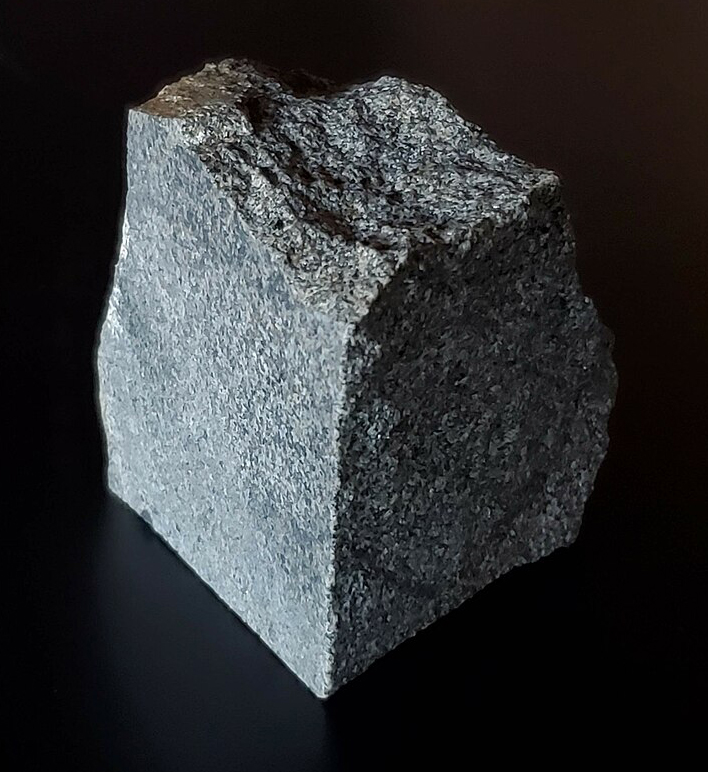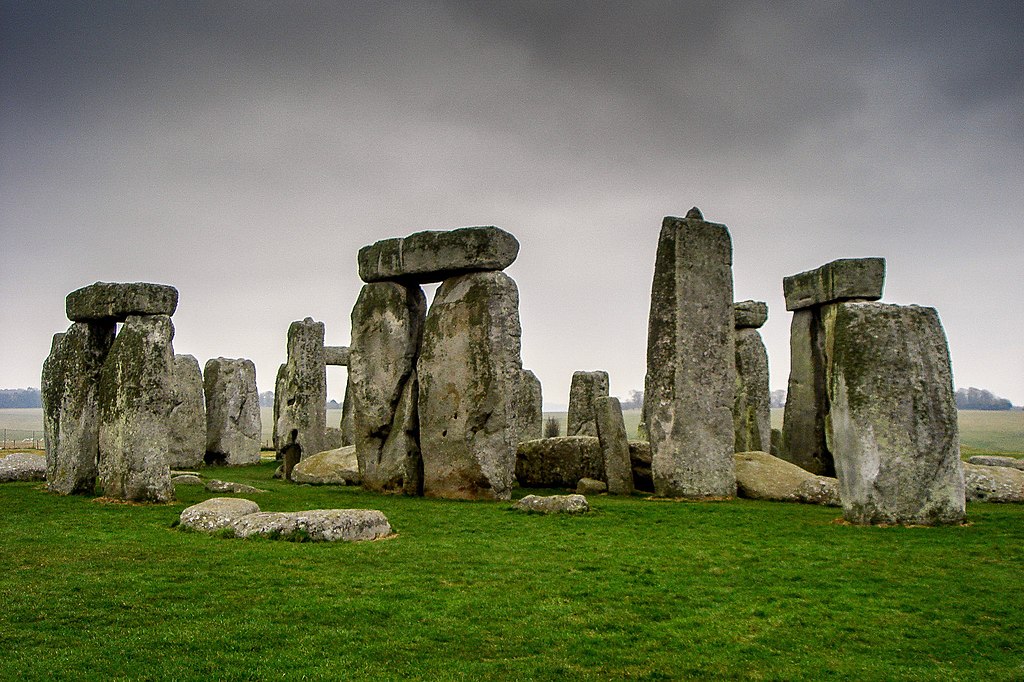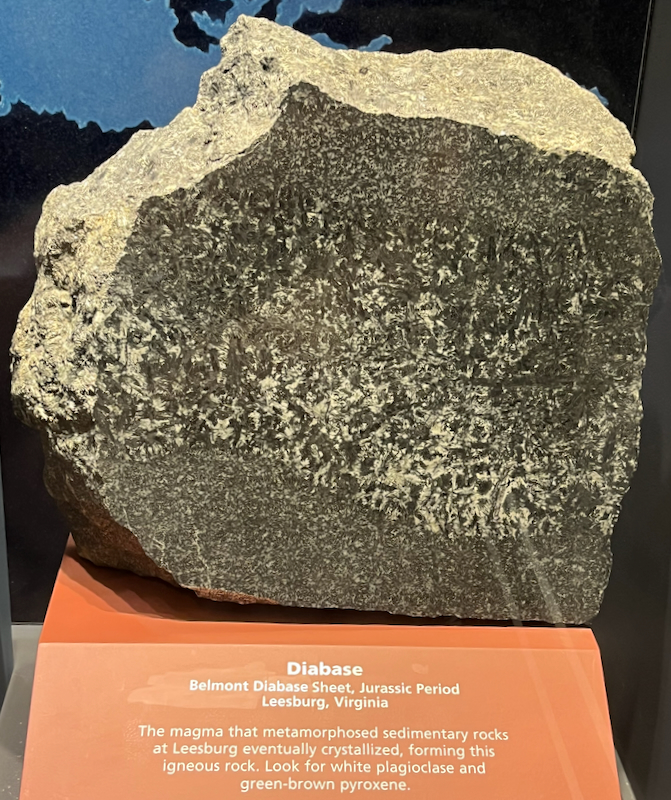Diabase
Diabase is an igneous rock that’s fairly similar to basalt, except, whereas basalt forms out on the Earth’s surface from lava, diabase forms from magma under the surface in what are called “dikes” or “sills.” What are they? Well, in geology a dike is a crack that crosses layers of rock in a deposit of rock and is filled with another type of rock. Lava can flow into that crack and harden into diabase. Appropriately enough, the word diabase comes from the French for “crossing over.” A sill, on the other hand, happens when lava flows into a space between layers—or forces two layers apart—then hardens there. Like a window sill, it’s wide and flat. The name diabase is only used in North America, while it’s called “dolerite” everywhere else. Whatever you like to call it, this rock is mostly made of feldspar, usually along with a “pyroxene” mineral called augite, as well as some iron minerals. It’s a pretty hard rock, so it gets broken into chunks for road and dam construction and is used for gravestones. But its most well-known use is that some of the stones in Stonehenge are diabase (or dolerite to the British).
| Formula | Group or Type | Shape | Hardness | Specific Gravity | Streak | Luster |
|---|---|---|---|---|---|---|
| — | — | — | — | — | — | — |


